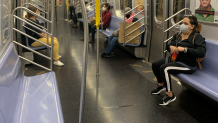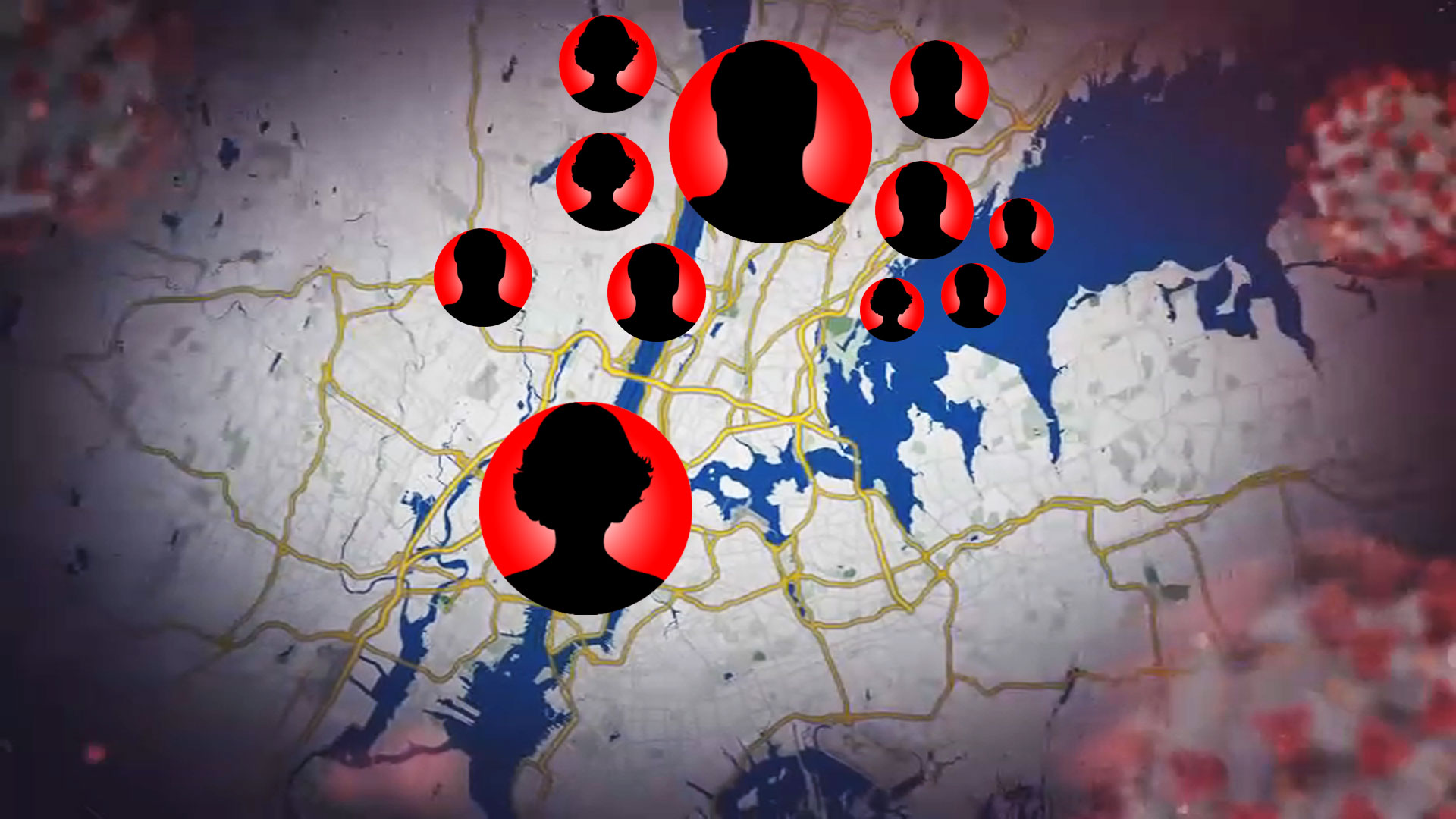What to Know
- Hundreds of thousands were expected to return to work Monday as New York City entered Phase I of its long-awaited reopening; social distancing, masks and other precautions will be part of the norm going forward
- In New Jersey, Gov. Phil Murphy says municipal and private club pools can reopen on Monday, June 22; full guidance is expected this week
- The progress has come at an excruciating price. New York, New Jersey and Connecticut have topped 40,500 confirmed COVID deaths, while the national toll has exceeded 110,000
Exactly 100 days since its first reported case of COVID-19, New York City ends its months-long virus shutdown Monday and looks to turn the page on one of the bleakest chapters in the five boroughs' -- and in America's -- history.
Between 200,000 and 400,000 people were expected to return to work as New York City entered Phase I, reopening tens of thousands of jobs in manufacturing and construction -- the same industries it has had to tap to survive amid a pandemic that has wreaked havoc on its supplies and its spirit.
"It is the day we start to liberate ourselves from this disease, the day we begin our restart in this city," Mayor Bill de Blasio said Monday from the Brooklyn Navy Yard, which turned into a wartime manufacturer of surgical masks, gowns and other equipment at the peak of the crisis. "All New Yorkers should be proud. You got us to this day. It is a day to celebrate."
It's also important to remember what -- and who -- it took to get here. Monday's moment of triumph for the former epicenter of the global COVID-19 pandemic has come at extreme cost.
In less than three months, New York City has lost at least 15,937 people to a virus that no one had heard of this time last year. The actual toll could be as high as 25,000, fueled largely by people who died before they were tested or got help. Relatives have had to watch loved ones pass through a virtual lens as battle-weary strangers on the front lines of the pandemic pause to hold their hands.
Today, New York daily COVID deaths are in the double digits -- a somber note of progress from a week-long stretch in April where nearly 800 were dying a day. Tens of millions of jobs have been lost along with the tens of thousands of lives; the true toll of COVID-19 on the American psyche may forever be incalculable.
Many questions remain: How many are truly sick? Will it be safe for children to go to school in the fall? Will the virus have a second wave -- and could that be as devastating as the one that crashed on the healthcare system earlier this year?
Cuomo seemed confident about New York's chances regarding a possible spike coming from reopening, saying that "if we stay as smart as we have for 100 days, we will be fine."
Tracking Coronavirus in Tri-State
Amid the unknowns, New York City looks to restore at least some of the persona that makes it one of the world's most vibrant places. At the same time, it looks to reform that persona amid institutionalized racial inequity that has contributed as much to higher virus death rates in black and Latino communities as it has higher death rates of black men at the hands of police.
Much won't or can't be changed overnight, even as New York City begins to ease restrictions that have shut down life as we knew it since mid-March. Many who did go back to work Monday returned to a transit system facing unprecedented public health challenges and a historic loss in revenue.
Commuters found daytime subway schedules back to usual Monday, with signs showing people how far apart to stand — or try to — on platforms. The 1 a.m.-to-5 a.m. shutdowns that began in early May continue so trains can be disinfected. Most trains appeared fairly empty for their first "rush hour" commute, as many New Yorkers take a watch-and-wait approach to the initial stages of reopening. Most if not all riders Monday were seen wearing mandatory facemasks, with some taking their first subway rides in months — and utilizing the free hand sanitizer available at almost every station.
Gov. Andrew Cuomo was later seen riding the subway to his daily COVID briefing in Manhattan, a blue surgical mask covering his nose and mouth as he stood glovelessly holding onto a pole in the train car.
"Disinfected, who would believe that, right? We used to complain about coffee cups, now they're disinfected," Cuomo said. "If it wasn't safe, I wouldn't ask anyone to go on the subway."
De Blasio said he would feel safe doing the same thing, but acknowledged some New Yorkers may be anxious.
To expand transit options, de Blasio announced Monday the city will implement 20 total new miles of busways and bus lines that will serve nearly 750,000 riders daily between June and October. The first new busway comes to Main Street in Queens later this month.
"We want to try and minimize the congestion and auto usage as we come out of the coronavirus," said city DOT Commissioner Polly Trottenberg.
The Staten Island Ferry also increased service for Phase 1, offering service every 20 minutes during rush hours and every 30 minutes outside peak travel times. Social distancing markers will be evident, masks made available. Riders will see similar new decals on Metro-North trains, which mandate facial coverings among measures to reduce exposure risk.

Construction, manufacturing, wholesalers and previously “nonessential” retailers resume work as of Monday, with restrictions. Retailers reopened for delivery and pre-paid pickup, though customers can't yet browse inside. And due to the late-night looting that accompanied the protests and triggered the city's curfew, many stores around the city weren't exactly ready for a grand opening on Monday anyway.
Many of those shops that didn't sustain property damage were still boarded up, though some of the plywood began coming down throughout the day, in hopes of having that limited reopening later in the week — and hoping Phase II will be more significant for business returning, or else many risk closing for good. The Brooklyn Chamber of Commerce offered the dire prediction on Monday that "35 percent of Brooklyn's 63,000 business may never re-open." Even those small business that do, many worry about paying rent until customers are comfortable enough to spend money once again.
Broadway theaters and other big venues remain shuttered, and New Yorkers are still required to wear face masks when close to others in public. Outdoor dining is still not permitted.
The latter ban will lift when New York City enters Phase II, which de Blasio says could happen in early July. Much of the rest of the state has already taken that next step, with the Mid-Hudson region expected to do so Tuesday. The Archdiocese of New York told NBC New York that weekday masses in counties in the Mid-Hudson region will begin weekday masses once again, with strict limitations on capacity and following all safety protocols, along with functions like weddings, baptisms and funerals. The same will be available for NYC churches once the city enters Phase II.
Long Island is expected to hit Phase II on Wednesday. Nassau County Executive Laura Curran is urging the governor to allow malls to reopen at that time, instead of the current timeslot for them in Phase IV, in order to re-coup some of the tax revenue that is off by 30 percent. But the governor hasn't shown any signs of changing that.
"This is not reckless reopening," Cuomo said Monday as he declared New York City eligible to resume elective surgery and ambulatory care. "This is by the guidelines. We're also going to keep a special eye on New York City. If you see any increases in the infection rate, react immediately. Watch it literally every day and calibrate what you're doing. You have to stay smart."
It's too early to tell if the citywide protests over the death of George Floyd, now entering a second week, have contributed to any increase in COVID cases. Cuomo once again urged any protest attendees to take advantage of one of the nearly 250 free testing sites in the five boroughs.
Monday marks an inflection point in New York City as officials face complex questions ranging from how to recoup billions in economic losses to how to restore public confidence in police and in daily life itself. Both require incremental steps toward recovery and long-term commitment to change.
New York City has had to prove itself before — after its population decline and fiscal crisis in the 1970s, after its 1980s-’90s crime peak, after 9/11. Cuomo said Monday New York City has already done it again as it relates to COVID-19.
"Congratulations. We are back. We went from the worst situation in the nation, frankly one of the worst situations on the globe, to not only flattening the curve but to bending the curve," he said. "One hundred days later, we are continuing our decline. The rest of the country is still spiking. How remarkable is that?"
While a marked improvement, it's still a far cry from life as usual. Native New Yorkers have grown more accustomed to isolation as the norm in recent months than the sights and sounds of urban life that have long made home "home."
Sam Solomon, a 22-year-old with a health-related job, finds it strange that she'll have to adjust to the same dense crowds that she once found as normal as waking up in the morning.
"I don't know if it'll ever be the same," she said.
Region by Region Status
Source: New York State; Report as of May 18
For months, Cuomo has said he doesn't want New York to reopen the same. He wants to build it back better, expanding access to healthcare and education through innovative technologies, accelerating long-overdue infrastructure projects, developing stockpiles of critical resources and regional coalitions with a collective strength far more powerful than any single state.
New Jersey and Connecticut are both part of that new seven-state Northeast coalition -- and both have experienced their own unique challenges as it relates to the novel coronavirus. New Jersey and Connecticut continue to see some of the highest new death and new hospitalization rates per 100,000 residents in America. They are both at various stages of their reopening processes.
The Garden State is expected to enter Stage 2, opening up hair salons, in-person retail and outdoor dining, in one week, while Connecticut looks to take its next major step forward just before Father's Day. Gov. Phil Murphy, announced Monday that municipal and private club swimming pools can reopen in New Jersey on Monday, June 22. The state's Department of Health is expected to release complete guidance on protocols and procedures to be followed Tuesday.
As more restrictions relax, there are continuous concerns about virus spread, especially across state lines. A county health department in Pennsylvania, for example, said over the weekend it had linked a-third of its 33 new cases to a New Jersey resident who attended multiple Jersey Shore house gatherings over the past two weeks.



